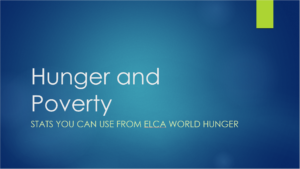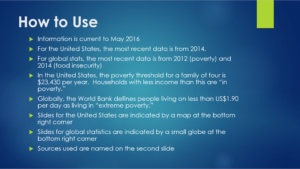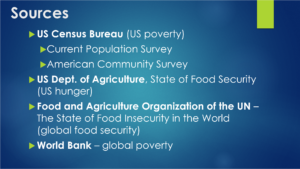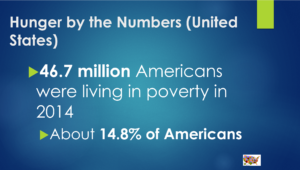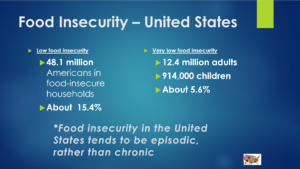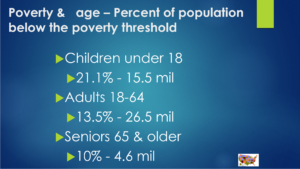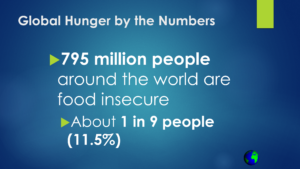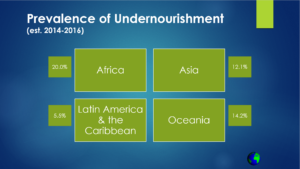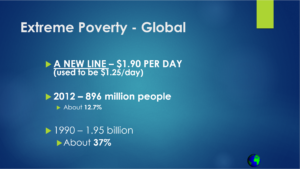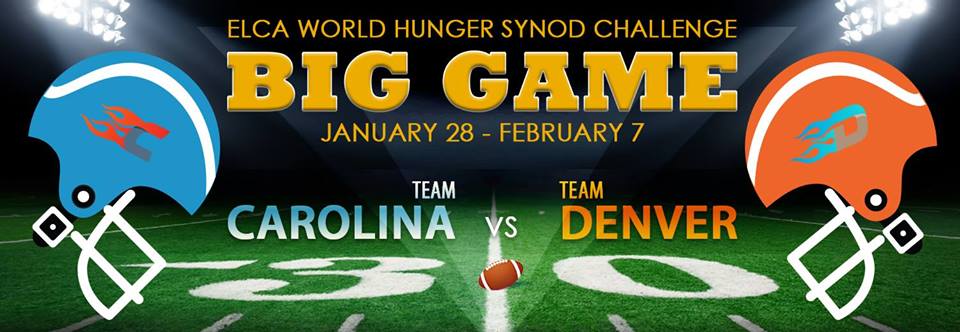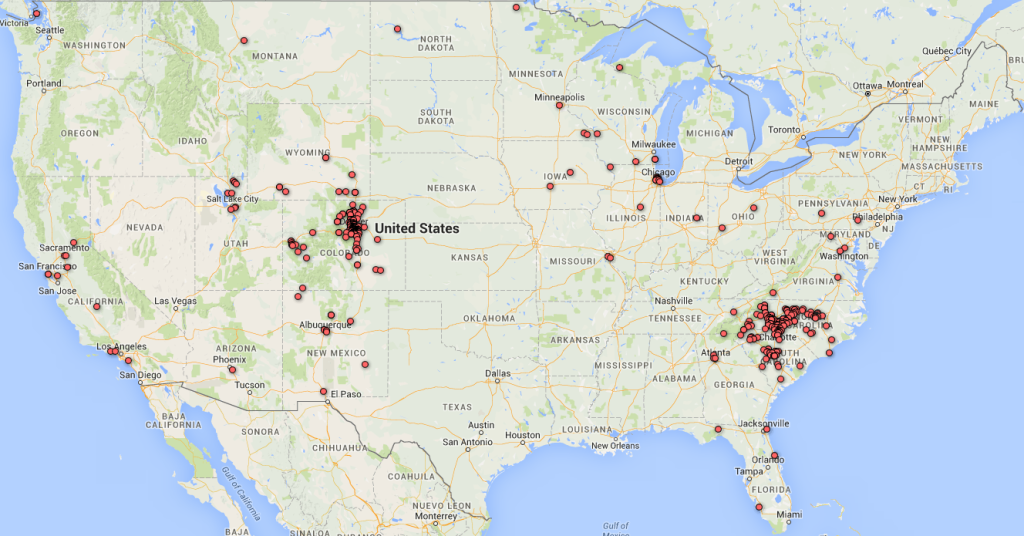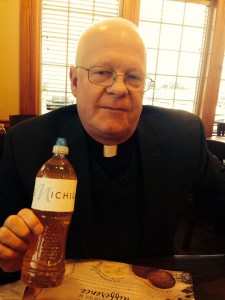October 11-18, 2015, churches around the world will join in prayer and action with people facing hunger during theChurches’ Week of Action on Food. This global event includes World Food Day (October 16) as well as the International Day for Disaster Reduction (October 13), International Day of Rural Women (October 15) and the International Day for the Eradication of Poverty (October 17).
This year is the international year of soils, so this Week of Action will be a special opportunity to raise awareness about farming and food production, and to pray for the people who help bring food from the ground to our table. It is also an important time to raise awareness about our role in caring for God’s creation and each other.
Below is a list of resources you can use with your congregation to be part of this important event. You can find more resources on the website of the Ecumenical Advocacy Alliance. You can also learn about an important way for your congregation to be involved in strengthening the United States’ support of small farmers, families and people in poverty around the world by visiting ELCA Advocacy.
Keep an eye out for more resources and news from ELCA World Hunger about the Churches’ Week of Action on Food!
Daily Bread: A Discussion Guide for Meal-Packing Events
This new resource from ELCA World Hunger is perfect for congregations and groups planning to do meal packing events. With fun activities, prayers and stories based on real-life situations, this guide will help your group have deep, meaningful conversations about hunger, service and what it means to be church for the sake of the world. Daily Bread will help guide your group along the way, from preparing to pack to celebrating and reflecting on the work you have done. Download it for free at http://download.elca.org/ELCA%20Resource%20Repository/ELCA_DailyBread.pdf?_ga=1.13041399.177232605.1439408545.
2015 Act 2 Day 4 Tomorrow
This adaptable program from ELCA World Hunger is perfect for Lutheran youth interested in learning more about hunger, faith and hope. It is designed for an overnight, a retreat, or a multi-week session for youth groups of all sizes. As the group takes part in the spiritual practice of fasting, they will be led through four themed sessions. Each themed session has three activities for youth group leaders to choose from and can be adapted to fit a variety of schedules and settings. Download it for free at http://download.elca.org/ELCA%20Resource%20Repository/Act_2Day_4_Tomorrow_2015.pdf?_ga=1.13041399.177232605.1439408545.
Road Map to Food Drives: A By-Youth, For-Youth Guide to Feeding Communities
ELCA World Hunger’s food drive guide can help youth and adults as they exercise servant leadership in their context. Written by youth with input from service providers, this guide is a step-by-step guide to planning, promoting and coordinating a successful, youth-led food drive for local pantries. In it, you will find instructions for planning a drive, handouts for youth to lead the drive, information on best practices and much more! Download it for free athttp://download.elca.org/ELCA%20Resource%20Repository/ELCA_FoodDrive_online_version.pdf?_ga=1.13041399.177232605.1439408545.
Do-It-Yourself Walk for Water Experience
At the 2015 ELCA Youth Gathering, thousands of young people participated in ELCA World Hunger’s Walk for Water, an interactive track experience that brought them into the story of a person without access to clean water. This Walk for Water Do-It-Yourself Guide has everything you need – discussion guides, instructions, posters, and signs – to host your own Walk for Water with your congregation. Download it for free athttp://download.elca.org/ELCA%20Resource%20Repository/ELCAWFWDoItYourself.pdf?_ga=1.125105482.177232605.1439408545.
Rooted in God’s Word and Lands: A Celebration of the Earth That Nourishes Us
This resource from Creation Justice Ministries encourages Christians to treat land as the special gift that it is. It has ideas for sermons, Sunday School activities, and adult study and contemplation exercises. Download it for free athttps://salsa4.salsalabs.com/o/50750/images/rootedinland.pdf?key=62473672.
Sustainable Food in a Changing Climate
This 2015 resource from Creation Justice Ministries offers prayers and liturgies for worship, ideas for educational programs, and suggestions for personal food choices that raise awareness about and encourage action toward sustainable choices about the foods we eat. Download it for free at https://salsa4.salsalabs.com/o/50750/images/Earth%20Day%202015.pdf?key=62473672.
Just Climate: Study Guide for Adult Christian Education
Creation Justice Ministries’ popular 2008 resource is as relevant today as it was when it was first released. This three-session study guide is perfect for audiences new to studying climate change. It has discussion and reflection questions, a leader’s guide to the issues, and fact sheets on several countries to help your group see the concrete effects of climate change around the world and in the United States. Download it for free athttps://salsa4.salsalabs.com/o/50750/images/Just%20Climat%202008.pdf?key=62473672.
Care of Creation Lectionary Reflections
Lutherans Restoring Creation offers an online archive of commentaries on the Revised Common Lectionary that is perfect for developing a sermon, a children’s sermon, or an educational forum. The archive can be found athttp://www.lutheransrestoringcreation.org/Home/care-of-creation-sermon-reflections-by-dr-dennis-ormseth.
Hunger and Climate Change Connections Toolkit
ELCA World Hunger’s toolkits are easy-to-use, adaptable for a variety of settings and suitable for intergenerational audiences. The activities can take as little as 15 minutes, or as much as one hour, depending on your needs. Learn about climate-related disasters, the effects of climate change on vulnerable populations and actions your congregation can take. Download this toolkit at http://download.elca.org/ELCA%20Resource%20Repository/Climarte_Change.pdf?_ga=1.23057915.177232605.1439408545
Hunger and Climate Change: Agriculture and Food Security in a Changing Climate
From biofuels to gender justice, from political stability to farming in the United States, this fact sheet from the ELCA highlights the wide-ranging effects of climate change. With ideas for what your congregation can do to support farmers and others impacted by climate change, this fact sheet is perfect for Lutherans concerned about agriculture and hunger. Download it athttp://download.elca.org/ELCA%20Resource%20Repository/Agriculture_And_Food_Security_In_A_Changing_Climate.pdf?_ga=1.48224999.177232605.1439408545
Caring for Creation: Vision, Hope and Justice
The ELCA’s social statement on care for creation, adopted in 1993, remains an important reflection on our role as stewards in God’s world. Read it here: http://download.elca.org/ELCA%20Resource%20Repository/EnvironmentSS.pdf?_ga=1.87350616.177232605.1439408545.
ELCA World Hunger Blog
ELCA World Hunger is a primary supporter of ministries that help local communities adapt to and mitigate the effects of climate change, from using drought-resistant crops to learning about more efficient soil management. Follow stories about programs your church supports, reflections on God’s Word and our Lutheran tradition, and updates on the latest hunger research by signing up for the blog. Visit www.elca.org/blogs/worldhunger to learn more.
Dig It! The Secrets of Soil
The theme for this year’s Churches’ Week of Action on Food is soil. The Smithsonian Museum of Natural History has a great website with activities for adults and children to learn more about this precious resource. Start digging athttp://forces.si.edu/soils/!
The Dirt on Soil: What’s Really Going on Under the Ground
In keeping with the theme for this year’s Churches’ Week of Action on Food, Discovery Education’s interactive online adventure is a fun way to learn more about the ground beneath our feet. Explore the layers of soil, read field guides or micro-size yourself for an exciting adventure! Get started at http://school.discoveryeducation.com/schooladventures/soil/.
Land Governance
Who owns the land is an important question when thinking about food production. Food and Business Knowledge Platform has an extensive website, with lots of information and easy-to-use fact sheets on land governance that can help you learn more about this important issue. Visit http://knowledge4food.net/theme/land-governance/ to get started.

